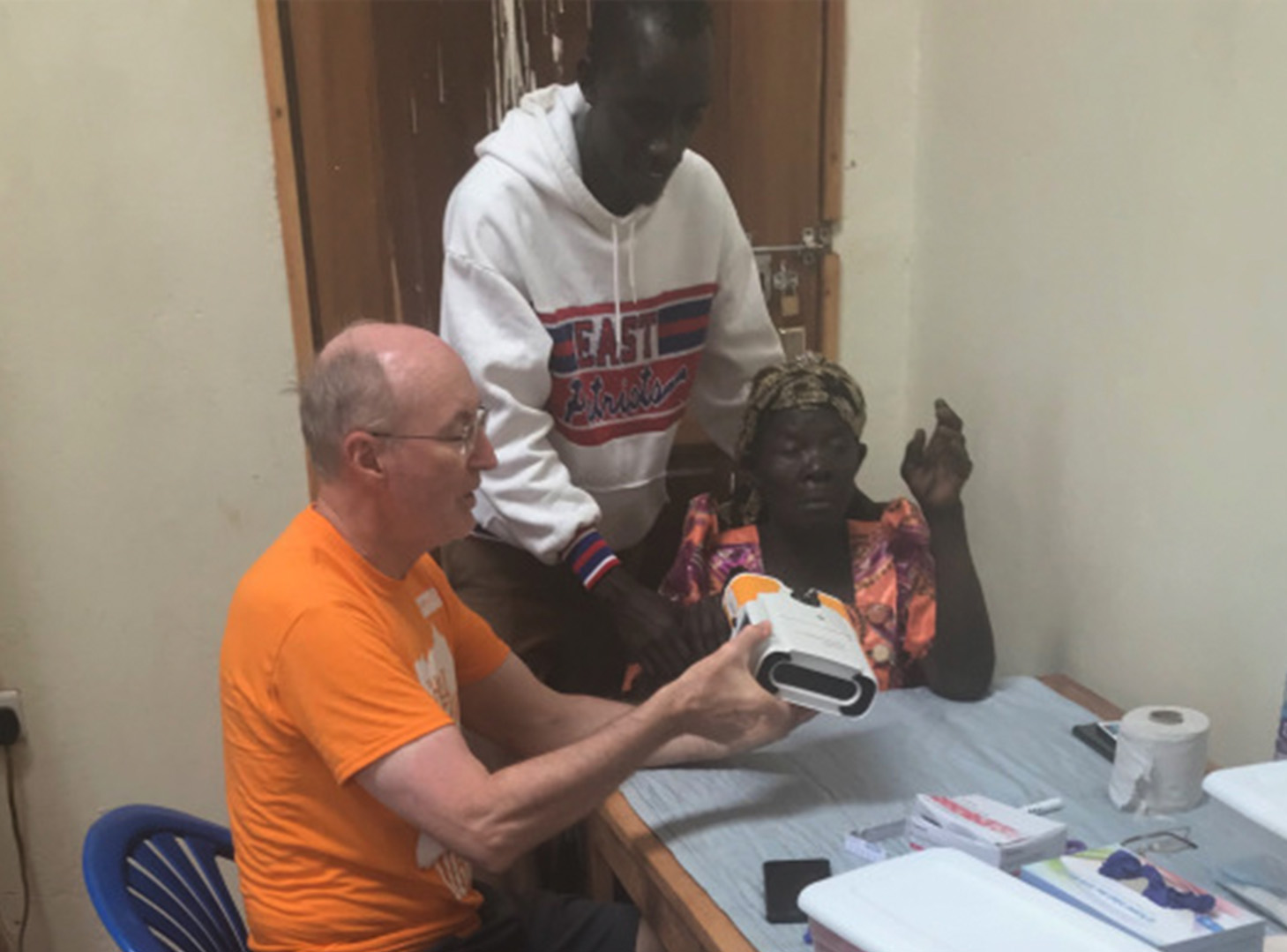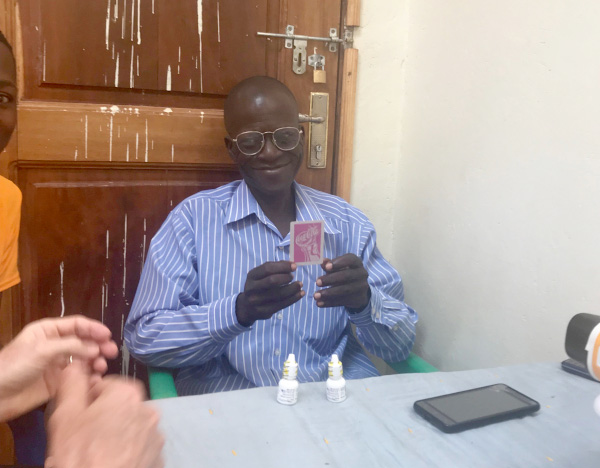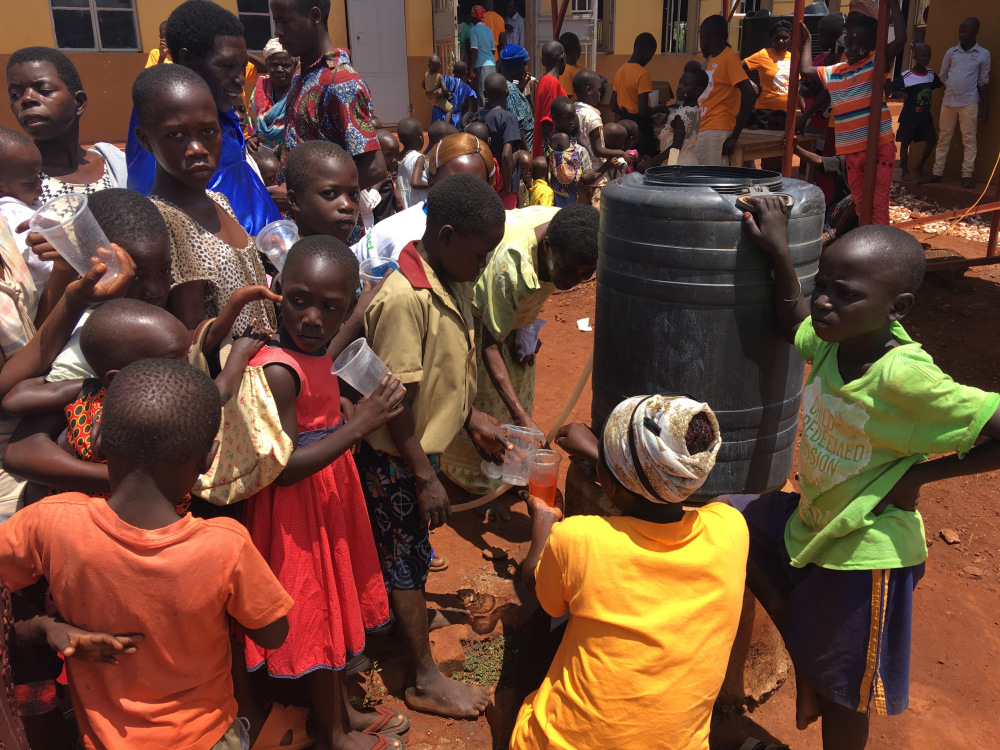
“There was no technology available” for refraction in the Ugandan village where Dr Randall Thomas, volunteering with Mission Servants Ministry in August 2019, provided aid to over 800 adults and children. “We took QuickSee because I am convinced it’s spot on…we relied on its accuracy to render prescriptions*.”
Dr Thomas, Bob Hillebrand (Mission Servants Ministry co-founder and CEO), and other volunteers from North Carolina travelled to collaborate with local organizations Child Redeemed Mission Home and Bwase Redeemed Church, 125 miles northeast of Entebbe, to provide a combination of aid services, including physical, practical, and spiritual support. Two days of air and ground travel, over 125 pounds of supplies per person—it was Mission Servants Ministry’s 28th such trip.
“Our goal is to empower the churches to reach out into their communities, and support projects they initiate,” said Mr Hillebrand.
On this trip, the churches requested general medical screening, so the team came prepared for basic vision, dental, and health examinations and service. The American volunteer team was joined by local church members and healthcare professionals from regional hospitals. They performed services on site when possible, and referred more serious cases to appropriate treatment locally. “Many people there are suffering with bad eyesight,” recalled Mr Hillebrand, “and they just had no hope of helping themselves.”
Related:
Scaling a solution to the global burden of uncorrected refractive error
Restoring vision where much was lost
20/20 vision for eyes—and lives
Dr Thomas refracted patients to make prescriptions for glasses, and also examined them for eye health. “A boy came to me for dental screening, with his mouth open, but he had this swollen eye with pus coming out,” recalled Mr Hillebrand. “I said, you need to go right over there” to Dr Thomas’s vision station. He had infection the team was able to treat.
“The beauty of QuickSee was that it allow us to get a baseline vision assessment to more accurately know what reading glasses” people might need, said Dr Thomas. “We could efficiently quantify their visual status,” especially among the adults. “So if a patient was a +1D they might need a +3.5D instead of a +2.5D…[QuickSee] let us be more exacting in delivering reading glasses.” Eyeglasses were provided by
National Vision, Restoring Vision, and others so patients could leave with correction immediately. (On prior trips, without QuickSee and Dr Thomas’s expert help, Mission Servants Ministry would do their best to match people with the donated readers they brought.)


Left: A man smiling as he is given new glasses to correct his vision. Right: Village children enjoying clean water and meals while attending services at Child Redeemed Mission Home. Photos courtesy Mission Servants Ministry
“These trips have created opportunities to help in ways we really didn’t expect,” said Mr Hillebrand, noting how often screenings and evaluations point to other things people need. “I think our future trips could be much bigger projects because people are beginning to understand how we can help. We probably could have handled more if people knew what we were able to do.”
Mission Servants Ministry’s contributions to the towns they visit haven’t been limited to health services. With a background in mechanical engineering and having run a successful manufacturing company, Mr Hillebrand has led the group to take on other critical projects, from helping to rebuild homes to drilling wells for drinking water. And, being a faith-based initiative, they focus on human impact: joining the community in prayer, providing skills training to women, playing with children, and giving personal attention.
With that scope of service, Mr Hillebrand’s measurement of impact goes beyond the numbers of people treated with vision or medical care. “The underlying reasoning behind what we do is spiritual and mission-minded,” he says. “The churches there are doing more outreach of their own, and they feel not only the blessing of our help but also the blessing of helping others.”
Top photo: Dr Randall Thomas refracting patients in Uganda with QuickSee. Photo courtesy Mission Servants Ministry. Photo courtesy Mission Servants Ministry
*The intended use of QuickSee is to objectively measure a patient’s refractive errors, to provide a starting point for subjective refraction performed by a vision care professional.
Randall Thomas, OD & Robert Hillebrand
Mission Servants Ministry
Charlotte, North Carolina missionservants.org
Please note: Our Privacy policy and Terms of service were updated on September 30, 2025
Are you ready to learn how to use QuickSee Free / Free Pro effectively? Tell us about yourself and your circumstances and we will reach out to arrange a training session with you.